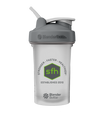Is it possible to shake off a disease? With diabetes, the answer may be yes. Every three minutes someone in America dies from diabetes. On top of that, 29 million Americans are afflicted by the disease - a 50% increase over the last ten years, according to the Diabetes Research Institute. If that wasn’t enough bad news diabetes can also cause a whole mess of problems, including heart and kidney failure, amputations, blindness, and stroke. For those with Type 2 diabetes, there are micro and macrovascular complications such as retinopathy, neuropathy, cardiovascular and cerebrovascular disease, hypertension, periodontal disease and more. In order to keep these serious problems at bay, those with Type 1 diabetes take a daily insulin injection to regulate their system. However, those with Type 2 diabetes, AKA adult-onset diabetes, might be able to do it without the use of pharmaceuticals. Through exercise, it is possible for some to shake it off and kick anti-diabetic drugs to the curb.
Many doctors rely on drugs to cure their patients. Too often they will push a prescription rather than trying good old-fashioned diet and exercise which, according to Live Science, is the best way to keep diabetes at bay. Of course, changing what you eat and committing to working out can be a lot harder than simply popping a pill. However, it does get results. In a study by Action For Health, eating right and sweating it out resulted in diabetes participants losing more than 6% of their weight, in addition to improving their blood levels, blood pressure, and cholesterol.
Regular activity is an important component of improving insulin insensitivity and lowering glucose levels, according to Medscape. A workout can help you use glucose independent of insulin, which can alleviate symptoms and even eliminate the need for meds. However, consistency is key, since after three days of a training session, the benefits will wear off and levels will return to their previous state.
Feel a bit weak at the thought of exercising with diabetes. It may have to do with hypoglycemia. If you go too long without eating, don’t eat enough, are completely stressed out, or exert yourself too much physically, you could experience very low blood sugar or hypoglycemia. This affects Type 1 sufferers more often, but Type 2 sufferers are not immune to it. To be prepared, boy scout style, a diabetic person should have a fast acting carb on hard, such as 15-20 grams of fruit juice or some glucose tablets. If you tend to look for the nearest fainting couch in every room, you may want to schedule snacks throughout the day to keep your blood sugar stable. For those with extreme issues, a doctor or nutritionist can give you a good meal plan or a list of foods to avoid. It is suggested that you also build more muscle, which may help your body process insulin, another way you can decrease the need for diabetes medications.
Dr. Jeff Leighton, SFH’s chief scientist, recommends both aerobic exercises and weight training for those who are looking to manage their diabetes. You need to increase your heart rate to 80% of your personal limit. However, you don’t have to go at it like Usain Blot. Make sure you ease into a routine in order not to overdo it. Make sure to warm up and cool down before each routine. A beginner can exercise with a walk for 15 to 20 minutes and increase from there. When you feel you have mastered that goal, then find a routine that challenges you more. You may find that using an activity monitor such as a Fitbit helps to motivate you and track your progress. It also can be invaluable as it also keeps track of your heart rate. You can also add friends to your account as exercise buddies to keep you honest to your commitment. If you ever feel shaky or anxious while working out, stop and make sure to check your heart rate and your blood sugar. In fact, you should check your blood sugar regularly pre and post workout. Of course, check with your doctor before embarking on any vigorous exercise program.
It is best for someone who has Type 2 diabetes to maintain blood glucose levels as normal as possible. What you put on your plate can affect this as well as your daily sweat session. Dr. Leighton recommends a low-glycemic diet, which the ADA advocates as a way to help you maintain your blood sugar levels. This means a combo of protein, fiber, low glycemic carbs, and good fats should be on the menu. This will give you a steady flow of insulin and eliminate those highs and lows, so you can rock steady.


















Leave a comment
This site is protected by hCaptcha and the hCaptcha Privacy Policy and Terms of Service apply.